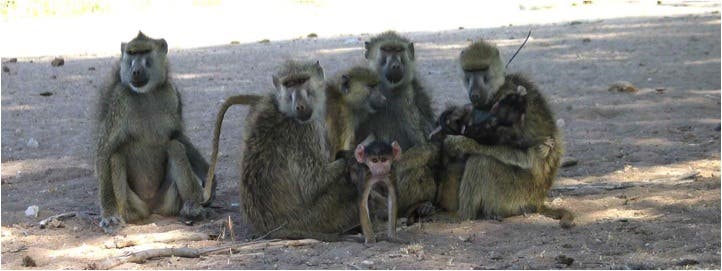The microbiome, or the collection of bacteria living inside humans and other organisms, is an important topic in research today, because many scientists have made connections between different diseases and illness to the populations of bacteria inside us, specifically in our guts. Previously, ZME Science has covered what the microbiome is and several important studies.
There are still many questions about the microbiome, because diet, genetics, location, and lifestyle all play a role in what species are dominant or absent and how well they grow inside us. Performing studies outside a lab is particularly difficult since it is hard to isolate one of those factors and study how the populations change.
Dr. Jenny Tung and her research team examined the microbiome and how a social network affected the populations of bacteria of Amboseli baboons of Kenya. Previously, these baboons were studied in their natural habitat, and observed for extended period of time by a different research group. There were a total of 48 baboons that naturally existed in two different groups, Mica’s group and Viola’s group. The baboons in each group groom each other, and how frequently this behavior was observed and between which pair was documented for a year. For an entire month, feces samples were collected from each animal. From these samples, shotgun metagenomic sequencing was applied, and this method cleaves the genetic material found in the sample and sequences the fragments. The fragments tell researchers what kind of bacteria there is and what kind of chemical processes are happening.
The authors state:
“Our results argue that social interactions are an important determinant of gut microbiome composition in natural animal populations – a relationship with important ramifications for understanding how social relationships influence health, as well as the evolution of group living.”
They found that social group was more important to predicting the species of bacteria than sex or age. Since Mica and Violas’s group lived in the same habitat and their diets were essentially the same, these factors could not explain why the microbiomes were different.
They also found that the baboons in the same group that groomed each other more frequently had more similar microbiomes, both in terms of what species of bacteria are present and how large the population is. A potential explanation for this is that this pair of baboons ate more similarly than the rest of the group. This potential explanation was taken into account using statistical tests, but these statistical tests ultimately did not produce any results that suggested the microbiome composition changes were due to grooming partner’s diets.
Though this study represents important new findings for the microbiome, we still do not understand how this works. Researching more about how the social network changes the populations of microbes inside us could help us understand both evolution and disease better.[1]
[1] Tung, Jenny, Luis B Barreiro, Michael B Burns, Jean-Christophe Grenier, Josh Lynch, Laura E Grieneisen, Jeanne Altmann, Susan C Alberts, Ran Blekhman, and Elizabeth A Archie. “Social Networks Predict Gut Microbiome Composition in Wild Baboons.” ELife (2015). Web. 15 June 2015.










